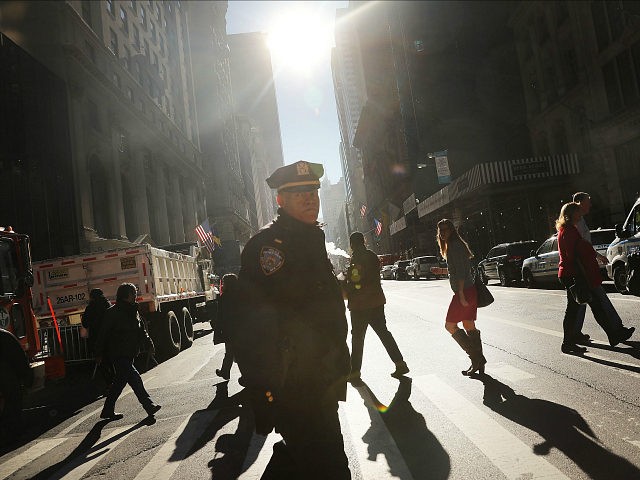The House Homeland Security Committee released its “December Terror Threat Snapshot” report on Tuesday and found the threat of Islamist terrorism worse than at any time since 9/11.
“The attack last week at Ohio State University is further proof that our homeland remains in the crosshairs of Islamist terrorists. Groups like ISIS are radicalizing new operatives from within our borders, and just this week their new spokesman called for more inspired attacks by supporters ‘all over the world,'” said committee chairman Michael McCaul (R-TX).
“Make no mistake: we face a deadlier threat than ever before not only because our enemies have gotten savvier, but because we took the pressure off them. For eight years, the Obama Administration reluctantly played global whack-a-mole with terrorists rather than leaning into the fight with decisive leadership,” McCaul charged.
“Because of this, the Trump Administration will inherit a generational struggle that has only gotten longer. But rest assured, we will work closely with them to turn the table on these fanatics,” he promised.
McCaul’s remarks, and the Homeland Security Committee’s report, stand in stark contrast to President Obama’s triumphalist speech at MacDill Air Force Base on Tuesday, in which he congratulated himself for running a nearly flawless war on terrorism for the past eight years. He boasted, “No foreign terrorist organization has successfully planned an executed an attack on our homeland.” In other words, all the “lone wolves” don’t count.
To put it mildly, the House report sees things very differently, beginning with the assertion that ISIS lone wolf attacks do count, especially to the people killed and injured by them. Also, while President Obama cited the number of terrorist operations detected and thwarted by law enforcement as a comforting sign the system is working, House Homeland Security sees it as a troubling indication that the tempo of terrorism is increasing.
The report says:
The United States faces its highest Islamist terror threat environment since 9/11, and much of the threat now stems from individuals who have been radicalized at home. Since 9/11, the nation has seen 227 homegrown jihadist cases with a recent surge of 115 cases in 2015 and 2016 alone. ISIS’ shift in messaging — from joining the jihad in Syria and Iraq to carrying out attacks in fighters’ home countries — is likely to accelerate this trend.
ISIS continued to wreak havoc against Western targets in 2016. Throughout the year, ISIS conducted 62 attacks, wounding 732 and killing 215 in places like the United States, France, and Belgium. The threat to Europe and the United States will persist in 2017, particularly as jihadists flee from Mosul and Raqqa. Terror groups will also continue to rely on refugee programs, porous borders, and well-known migration routes to gain access to various countries throughout the West.
The report also asserts that the Iran nuclear deal, along with instability in Iraq, Syria, and Yemen, has “reenergized Tehran’s hardliners and placed the regime in a stronger position to achieve regional hegemony.”
“Iranian aggression, particularly in the Persian Gulf, has become routine and remains largely unopposed. If left unchecked, Tehran will continue to threaten United States’ interests at home and abroad,” the report warns.
Another sharp difference with President Obama’s outlook is on the matter of Guantánamo Bay. In his final major foreign policy speech, Obama described closing Gitmo as a moral imperative, derided opponents as prisoners of the “politics of fear,” and boasted about how many detainees have been transferred to the custody of foreign governments.
House Homeland Security notes that the President forgot to mention “at least 30 percent of all former Guantanamo Bay prisoners are known or suspected to have returned to terrorism following their release.”
The report quotes information from the National Counterterrorism Center about “individuals with ties to terrorist groups in Syria attempting to gain entry to the U.S. through the U.S. refugee program.” The dangers of Somali refugees are highlighted with Abdul Razak Ali Artan’s car-and-knife jihad attack on the Ohio State University Campus. Other prominent terrorism cases involving refugees include the November 2015 massacre in Paris and the March 2016 attack on Brussels.
While the report agrees with President Obama’s assessment that ISIS has lost considerable territory and influence in Syria, Iraq, and Libya, a great deal of ISIS activity from affiliates around the world is logged, along with plenty of dangerous moves from al-Qaeda, which most certainly did not go out of business with the death of Osama bin Laden.

COMMENTS
Please let us know if you're having issues with commenting.